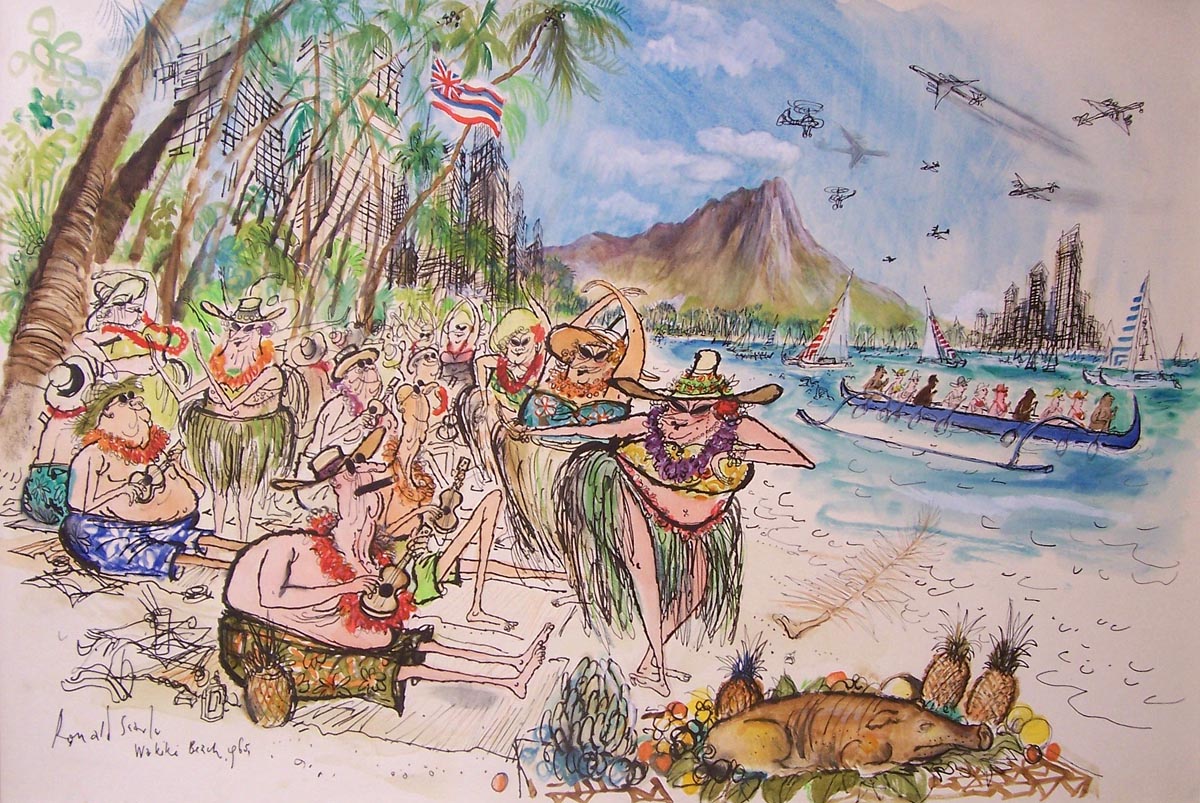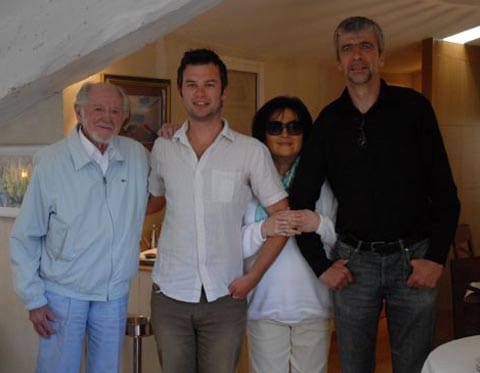
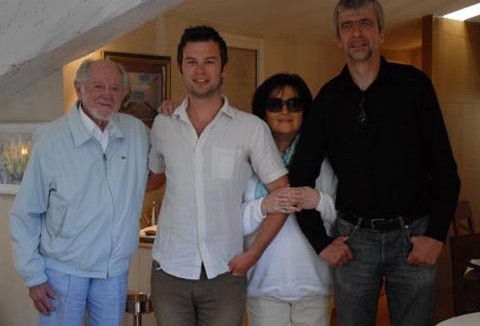
My Friend, Ronald Searle
[Editor’s Note: In memory of Ronald Searle’s passing, we present this tribute by Matt Jones. Besides working as a story artist at Pixar, Matt is the curator of the Ronald Searle Tribute blog, a fantastic repository of Searle’s artwork and a required first-stop for anyone interested in his work. In the piece, Matt speaks about the friendship he formed with Ronald Searle in the final years of his life.]
My Friend, Ronald Searle
by Matt Jones
Disney’s Nine Old Men, Ken Anderson, Chuck Jones, Tex Avery, Bob Clampett, Joe Grant, Art Babbitt . . . all the American icons of animation had already left us. I moved to the United States too late to meet any of them, but at Pixar I work with many people who had the privilege of knowing and learning from these legendary artists, and I listen to their tales with glee. When I lived in Europe, however, there was still one legendary artist left who had outlived them all, one who had influenced them all, and one who I was fortunate to meet and get to know–the incomparable Ronald Searle.

I first became aware of Searle’s work trawling the second hand bookshops on London’s Charing Cross Road. His work struck me as the forebearer of a British cartooning tradition dominated by Ralph Steadman and Gerald Scarfe at the time. I had discovered them in art school and came to realize that Searle was the original master of the scratchy, spattered ink line, influencing all who followed. I was dissatisfied with the materials that were available online about Searle, and sought to establish a resource of choice scans from my growing collection of his books. I undertook the blog merely as a fan. Little did I know that I would later come to know the artist and even have him contribute material to the site.
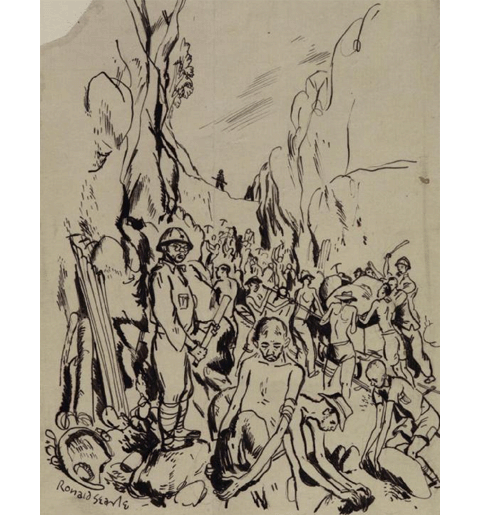
In 2008, while working on an animated feature in Nice in the south of France, I couldn’t resist an attempt to contact my artistic hero who I knew lived in a small hilltop village an hour’s drive from the French Riviera. Â With great respect and trepidation, I managed to establish a connection with Mr. Searle. If the pleasure of meeting him wasn’t reward enough, I was delighted that he also turned out to be the most welcoming and generous soul I’ve known, matched in temperament by his adoring wife Monica, with whom I would soon become acquainted.

They were a couple in ‘the late autumn of their lives’ as Monica put it, but time spent in their company was invigorating. They invited me back on several occasions, accompanied by my friend, and equal Searle enthusiast, Uli Meyer. We were treated to champagne-fueled lunches that lasted hours. The Searles happily answering our endless questions and offered anecdotes of their shared adventures that still make me smile. Very much in love, they were each others’ rock. After Monica’s death last summer, I thought it was inevitable that Ronald’s health would decline, even though I believed he would reach the age of 100 as he always told me he was aiming to do.
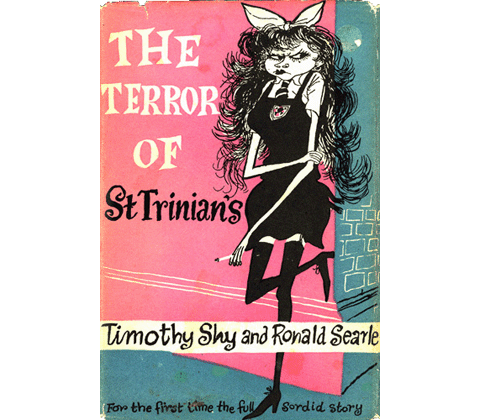
They both struggled with ill health and their failing bodies, but they were young at heart. It was like being with a very vivacious couple decades younger. Age didn’t seem to matter with them! I found out that they remained very much connected to the modern world despite living in that small French village for forty years. Â Ronald was very pleased by the blog I maintained on his work and insisted on paying for those long lunches out of gratitude for my efforts, saying it saved him the trouble of maintaining a website of his own. I would protest saying it was my honor, but he wouldn’t hear of guests paying at his table.
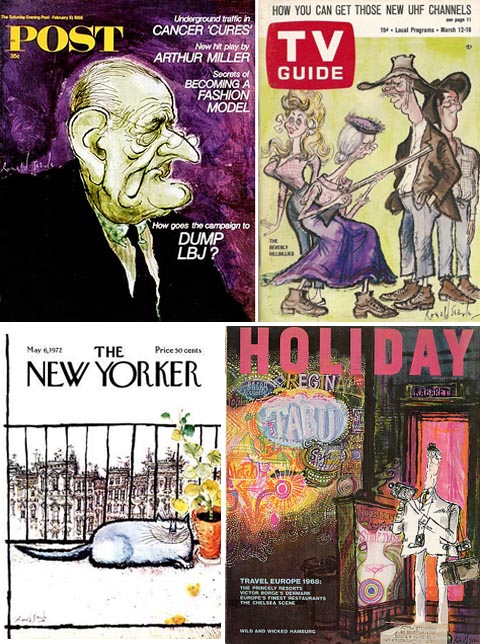
Outside of those visits we maintained a correspondence, initially by post. It was always a thrill to receive a letter addressed from him with ones’ name in his inimitable hand. Later we communicated by e-mail. Ronald always graciously replied to my enquiries about his work with remarkable recall. I treasure those letters he sent and already miss greatly seeing his name pop up in my inbox.
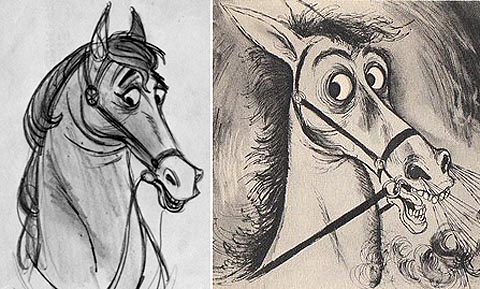
In his last message from December he responded to the news that, thanks to the efforts of Jamie Bolio and Frank Gladstone, he would be honored this year at the Annies with the Winsor McCay Award:
Dear Matt,
I remain totally surprised and touched by the continuing generosity of fellow artists. I would love to accept the honour, but I am afraid that I would be considered a total flop from the point of view of acceptance reaction.
I am not well and without much strength. But I am very well surrounded and looked after. So no grumbles.
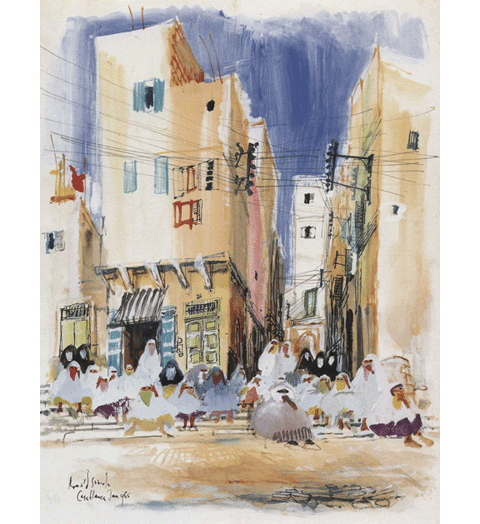
Ronald was always amazed by how many contemporary artists are influenced and inspired by his work. But typically he sought to push us to further the medium. In this short speech he wrote for my presentation about his work at CTN-X 2009, he reinforced his love for the drawn line and encouraged us to not lose that love of drawing ourselves, a message that he practiced until the end:
“Greetings to this sparkling constellation from an ex-Hollywood dinosaur. Yes, it is weird to realize that when I was born, radio and television did not exist in the home. But the cinema was wildly alive, and animation was bursting out all over. Every week I gathered up my pocket-money and dashed to the local flea-pit to lose myself in the splendidly eccentric adventures of Felix the Cat. Drawings were actually coming alive! I was hooked.
Animation has come a long way since those golden pioneer days of Felix. Now the future is in the hands of you lucky people. Forgive me if I take advantage of this exotic occasion to make a small plea as an infatuated pen and ink dipper. Please do not forget that the magical pen line still exists!
Also, merely as an observer, I feel that some of you could switch off the automatic pilot and wing your way into wilder territory. Just a thought. Thank you very much for inviting me. I will now go back into my hole.”
